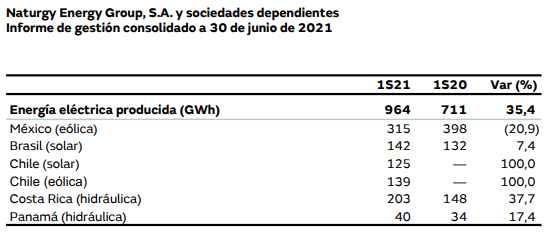Naturgy produced 315 GWh of wind power in Mexico in the first half of 2021, which represented a decrease of 20.9% compared to the same period of the previous year.
Globally, the company is present in more than 20 countries, supplies gas and electricity to more than 16 million customers and has an installed capacity of 15.3 GW and a diversified mix of electricity generation.
On the contrary, in all of 2020, Naturgy registered a 12.5% year-on-year increase in its wind power production, to 754 GWh.

For the company, climate change has become a decisive factor for the survival of companies, especially energy companies, the risks associated with it being the ones with the highest probability and impact, according to the Global Risks Report 2020 by World Economic Forum.
Furthermore, in line with the last annual materiality analysis that Naturgy carried out, climate change and the energy transition are the most relevant issues for its business and its stakeholders.
According to the International Energy Agency, in the scenario that the climate policies already declared are maintained, renewable energies will cover 80% of the growth in world electricity demand until 2030.
Likewise, it is already a reality that renewable technologies – such as wind or photovoltaic – are the cheapest for generating electricity.
Naturgy
In this sense, the company bases its strategy on the conviction that the energy transition is an opportunity.
Therefore, among other measures related to climate change, the company is committed to substantially increasing the installed capacity of renewable generation, increasing electrification in the countries in which it operates, taking advantage of the potential of natural gas to reduce gas emissions. greenhouse effect, boost renewable gas, and improve energy efficiency along the value chain.
The closure, in the first half of 2020, of all the company’s coal plants implied a significant reduction in carbon emissions.
In 2020, Naturgy emitted 14.3 million tCO2 eq into the atmosphere, which represents a reduction of 30% compared to 2017 and started up 151 MW of renewable power that, added to the one already in operation, made it possible to avoid the emission to the atmosphere of more than 5 million tCO2 eq.
![]()

